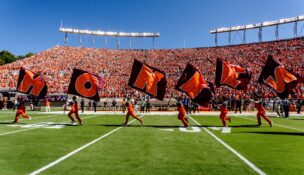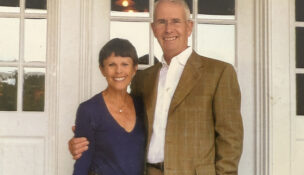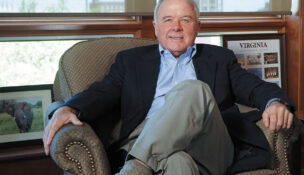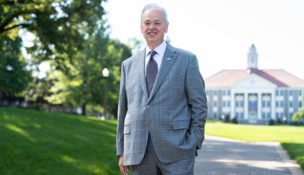U.Va. in transition
New president preparing for Aug. 1 start
James E. Ryan is off to a fast start as the new president of the University of Virginia although he actually hasn’t begun the job.
Ryan, the dean of the Harvard Graduate School of Education, has moved up his start date at U.Va., announced two search committees to fill top leadership roles and named a former law school colleague to oversee an ambitious capital campaign for the university’s third century.
Ryan will succeed U.Va. President Teresa A. Sullivan on Aug. 1, two months earlier than originally planned. His appointment was announced last fall.
In an email, he says that among his priorities will be “to build on the momentum generated by President Sullivan, especially in the areas of faculty recruitment, financial aid, and growth in research and philanthropy.”
And, he says, he’s “doing what I can to earn the trust of the community.”
He has met with all the university’s vice presidents and has been traveling to Charlottesville about once a month to meet with deans, faculty and staff. In late April, he visited U.Va.’s College at Wise.
“It’s been a great way to get to know parts of the university with which I was not as familiar when I was a law professor,” Ryan says.
He describes what he has seen as inspiring.
“The exciting research that is being done across Grounds and the care and commitment to great teaching has been truly impressive, and the affection that students feel for the university is palpable.”
Ryan also has met with state and U.S. legislators and has “had a lot of conversations with a diverse cross-section of the larger” university community and its stakeholders.
His meetings are “with an eye toward crafting a shared vision for the future” of U.Va. through a strategic plan, he says.
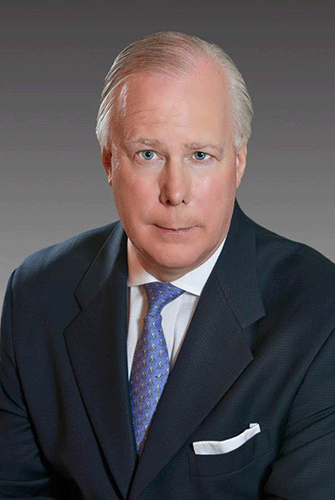
“One piece of advice I gave Jim Ryan, given the length of the transition, was that he be ready to go on Day One,” says Conner, a Washington, D.C.-based partner with the law firm Covington & Burling LLP who co-chaired the committee leading the presidential search.
Coinciding with the presidential transition has been “a lot of turnover,” primarily from retirements, Conner says, although many officials will remain from “the great leadership Terry Sullivan has attracted” during her eight-year tenure. “It’s a matter of supplementing the talent pool we have already,” he says.

Two key expected departures involved Patrick D. Hogan, the chief operating officer who had announced plans to retire in June 2019, and Thomas C. Katsouleas, the provost, who was to have stepped down at the end of the 2017-18 academic year.
In a March letter to the U.Va. community, Ryan said both have agreed to remain until their successors are found, adding Hogan also will stay on “to help in a consulting role as we bring a new person on board.”
Ryan also wrote that he has asked John C. Jeffries Jr., a law faculty member and former dean, to serve for three years as senior vice president for advancement, effective Aug. 1, to help establish a strong start to the capital campaign.
Jeffries will work alongside Mark Luellen, the vice president for advancement, on the campaign, which now is in its “quiet” fundraising phase with the public launch planned next year.
U.Va.’s last campaign, completed in 2013, raised $3 billion, but Jeffries says it would be premature to discuss the scope of the new effort.
“My sense is that everyone who watches public higher education knows that private support is becoming more and more essential,” he says. “The University of Virginia has historically done a pretty good job of marshaling private support because of the loyalty of our graduates. And I think we’re on track to do that again.”
No stranger to campus
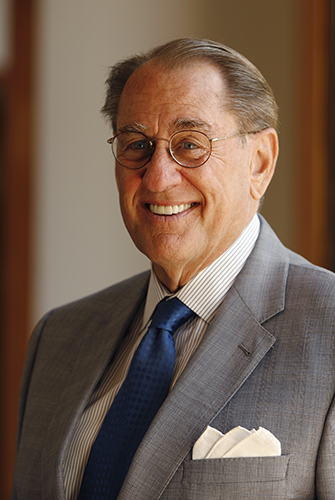
Ryan, a U.Va. law school graduate who served on its faculty for 15 years, is returning to a university he knows well and where people know him, Conner says.
Transitions can be awkward times, he says, but Sullivan and Ryan “have worked very hard to minimize that awkwardness.”
When Ryan steps in the day after Sullivan steps down, he won’t move into Carr’s Hill, the presidential residence she has occupied since 2010. While the house undergoes $7.88 million in renovations, Ryan will live in Pavilion VIII in Thomas Jefferson’s Academical Village.
His temporary quarters overlook the Lawn, the symbolic heart of the university that was the setting for the dramatic bookends to Sullivan’s tenure: The Lawn was where the faculty and students staged a revolt in 2012 that thwarted an attempt by some board members to remove her from office. And last August, the Lawn was where hundreds of white supremacists carrying torches staged a surprise march the night before the violent “Unite the Right” rally that shocked the nation.
U.Va., in fact, found itself in the national glare of nearly every higher-education issue that came to the fore during Sullivan’s tenure. A 2014 Rolling Stone article about an alleged gang rape, for example, briefly made the university a national symbol of campus sexual assault until the magazine retracted the discredited story.
“I think [Sullivan] has managed with a very calm demeanor through any number of issues that most presidents don’t have to address,” Conner says.
A university, he says, can be “a great institution but still be imperfect and have all sorts of issues” to confront.
“The institution is not some isolated place of nirvana. We reflect all of what’s going on in society,” he says. “It’s a question of how you deal with these issues as a president both from an immediate standpoint and a longer-term basis.”
Sullivan has positioned the university “for extraordinary success over the next decade” in ways that have not always been apparent, Conner says.
Strategic Investment Fund
He cites as an example the Strategic Investment Fund, now worth about $2.4 billion. It was initially derided as a “slush fund” by a former rector, Helen Dragas, who had instigated the board effort to fire Sullivan.
The fund now is viewed “as one of the most creative financing devices for a university, and many other universities have taken steps to emulate it,” Conner says.
The board has approved more than $307 million in grant proposals from the fund since September 2016.
The two largest awards have been $100 million to create the Bicentennial Scholars Fund for Need- and Merit-based Scholarships and $75 million for the Bicentennial Professors Fund to recruit top faculty.
Both are multiyear, matching programs that would leverage private gifts, with the goal of creating a $300 million scholarship endowment and about 70 endowed professorships.
The board also has approved $15.7 million to advance brain research focused on therapies for neurodegeneration and epilepsy, and about $17 million for studies related to Type 1 diabetes.
Other approved projects reflect the range of work at the university, such as $250,000 for “Reimagining Librarianship,” $1 million for the Virginia Initiative on Cosmic Origins and $6.2 million to support transformative autism research.
Conner primarily credits former Rector William H. Goodwin Jr., Sullivan and Hogan for the strategy to invest funds previously held as cash reserves. The strategy essentially created an unencumbered endowment to finance university priorities and initiatives.
New financial model
Sullivan also instituted a new financial model that drew little attention outside the university, but “I think has appropriately incentivized the various units within the university to make the decisions they need to make to be successful going forward,” Conner says.
The model, phased in over several years, decentralizes accountability and authority for resource management for university units, such as schools and other U.Va. organizations.
For example, rather than the facilities department assuming responsibility for costs across Grounds, “those charges are now aggregated and doled out to units based on usage,” explains Michael W. Phillips, associate director of the Weldon Cooper Center for Public Service.
This approach gives the university and its units “a truer sense of how each unit is doing from top to bottom,” he says. “The real bonus is it matches up revenues and expenses with incentives for the organization to do better.”
Phillips, who is also co-chair of the Staff Senate, sees a “generally positive” atmosphere at U.Va. “We’ve seen a lot of good changes President Sullivan has made, and I know that the staff is looking forward to what President Ryan will do as well,” he says.
Sullivan declined through a university spokesman to comment or discuss her immediate plans.
In his email, Ryan says he has been in regular contact with Sullivan, “who has been incredibly generous with her time and with her counsel.”
“I am looking forward to getting started; and I am grateful to all those who have been helpful in the transition.”
Ryan originally had requested an October start date for family reasons. His wife, Katie, and two of their children will remain in Massachusetts during his first year in office so that his son can complete his senior year at his current high school.
While those considerations remain, he wrote in his March letter, the earlier start date is “the right thing to do for the university, given the rhythm of the academic year.”
The August start date also will mean the board will not need to appoint an interim president, Conner says. He sees this transitional period and U.Va.’s bicentennial as “a good time to renew the focus of the university, and that’s what we’re doing.” The bicentennial observance began Oct. 6 on the 200th anniversary of the laying of the first university cornerstone, at Pavilion VII. The commemoration continues until Jan. 25, the 200th anniversary of U.Va.’s charter.
Conner’s time working with Ryan during the transition has showed him “how thoughtful and creative and decisive a leader he will be as president,” the rector says.
Ryan has “a voracious appetite for information,” he says. Ryan’s book “Wait, What?” may have posed only the five essential questions of life, but “he asks 50 questions on every other subject.”
-

